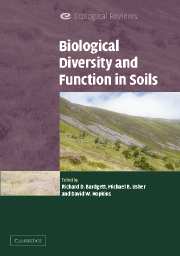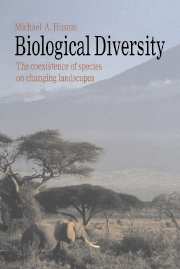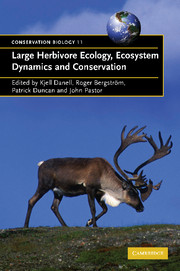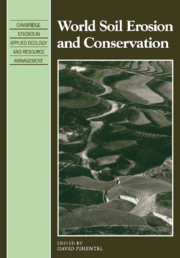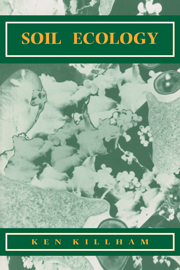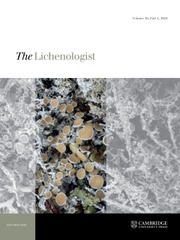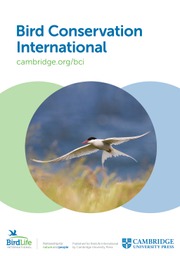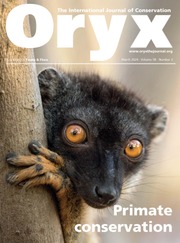Biological Diversity and Function in Soils
Soil has generally been regarded as something of a 'black box' by ecologists. The importance of soil is obvious: it provides physical support for plants, and both the living and non-living components contribute to a variety of important environmental functions. Soil is a species-rich habitat, but many questions about the ecological significance of the soil's biological diversity, and in particular how it affects ecosystem function, have never been asked. The linkages between above-ground ecology, which is rich in ecological theory, and below-ground ecology, where investigation has been restricted by methodological difficulties, have not been made. Technical developments, including isotopic and molecular methods as well as experimental and modelling approaches, have led to a renaissance in soil biodiversity research. The key areas are reflected in this exciting volume which brings together many leading contributors to explore the role and importance of soil biota.
- A major synthesis focusing explicitly on soil biodiversity and ecosystem function
- Integrates a vast body of literature on recent theoretical and technological developments in soil ecology and plant-soil relations
- Provides a strong research basis for both policy development and practical management of soil biodiversity in a changing world
Reviews & endorsements
'… the contributions are well written and come up with new views and perspectives. … the book is very well edited and includes a comprehensive index allowing quick location of topics. … the editors are to be congratulated for having brought together some of the most prominent in the field for contributing to this volume. … Certainly, the new book will substantiate the appreciation of the importance of the below-ground system and I wish it will be read not only by people working on soil biota but by a wide audience of ecologists including those working on above-ground systems.' Basic and Applied Ecology
'This is an excellent reference book that provides information on soil eco-system functioning which will be useful to a wide range of readers from undergraduates to researchers. The great subject breadth contains a lot of very useful information for both the specialist and those wishing to extend their knowledge into other areas. Non-specialists will find this a very good introduction to soil biology as it informs just how diverse, active, potent and intriguing soil systems are. A text to be recommended.' Experimental Agriculture
'It offers a clear, often brilliant demonstration that the knowledge of soil biodiversity is the key for the sustainable management of terrestrial ecosystems.' European Journal of Soil Science
Product details
January 2006Adobe eBook Reader
9780511133688
0 pages
0kg
87 b/w illus.
This ISBN is for an eBook version which is distributed on our behalf by a third party.
Table of Contents
- List of contributors
- Preface
- Acknowledgements
- Part I. Introduction:
- 1. Developing new perspectives from advances in soil biodiversity research Diana H. Wall, Alastair H. Fitter and Eldor A. Paul
- Part II. The Soil Environment:
- 2. The habitat of soil microbes Iain M. Young and Karl Ritz
- 3. Twenty years of molecular analysis of bacterial communities in soils and what have we learned about function? A. G. O'Donnell, S. R. Colvan, E. Malosso and S. Supaphol
- 4. Carbon as a substrate for soil organisms D. W. Hopkins and E. G. Gregorich
- Part III. Patterns and Drivers of Soil Biodiversity:
- 5. The use of model Pseudomonas fluorescens populations to study the causes and consequences of microbial diversity Paul B. Rainey, Michael Brockhurst, Angus Buckling, David J. Hodgson and Rees Kassen
- 6. Patterns and determinants of soil biological diversity Richard D. Bardgett, Gregor W. Yeates and Jonathan M. Anderson
- 7. How plant communities influence decomposer communities David A. Wardle
- 8. The balance between productivity and food web structure in soil ecosystems Peter C. Ruiter, Anje-Margriet Neutel and John Moore
- 9. Rhizosphere carbon flow: a driver of soil microbial diversity? D. B. Standing, J. I. Rangel Castro, J. I. Prosser, A. Meharg and K. Killham
- Part IV. Consequences of Soil Biodiversity:
- 10. Microbial community composition and soil nitrogen cycling: is there really a connection? Joshua P. Schimel, Jennifer Bennett and Noah Fierer
- 11. Biodiversity of saprotrophic fungi in relation to their function: do fungi obey the rules? Clare H. Robinson, E. Janie Pryce Miller and Lewis J. Deacon
- 12. Is diversity of mycorrhizal fungi important for ecosystem functioning? J. R. Leake, D. Johnson, D. P. Donnelly, L. Boddy and D. J. Read
- 13. Trophic structure and functional redundancy in soil communities Heikki Setälä, Matty P. Berg and T. Hefin Jones
- 14. Plant-soil feedback and soil biodiversity affect the composition of plant communities Wim H. van der Putten
- 15. Response of the soil bacterial community to perturbation Alan J. McCarthy, Neil D. Gray, Thomas P. Curtis and Ian M. Head
- Part V. Applications of Soil Biodiversity:
- 16. Soil biodiversity in rapidly changing tropical landscapes: scaling down and scaling up Ken E. Giller, David Bignell, Patrick Lavelle, Mike Swift, Edmundo Barrios, Fatima Moreira, Meine van Noordwijk, Isabelle Barios, Nancy Karanja and Jeroen Huising
- 17. Restoration ecology and the role of soil biodiversity J. A. Harris, P. Grogan and R. J. Hobbs
- 18. Soil biodiversity: stress and change in grasslands under restoration succession Lijbert Brussaard, Ron G. M. de Goede, Lia Hemerik and Bart C. Verschoor
- 19. Soil biodiversity, nature conservation and sustainability Michael B. Usher
- Part IV. Conclusion:
- 20. Underview: origins and consequences of below-ground biodiversity Karl Ritz
- Index.

